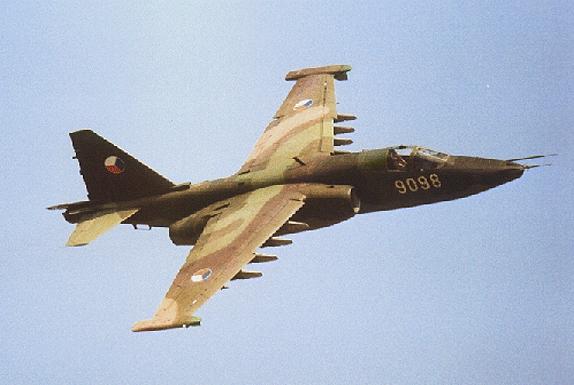
The Sukhoi Su-25 (NATO reporting name: "Frogfoot") is a single-seat, twin-engine jet aircraft developed in the Soviet Union by the Sukhoi Design Bureau. It was designed to provide close air support for the Soviet Ground Forces. The first prototype made its maiden flight on 22 February 1975. After testing, the aircraft went into series production in 1978 at Tbilisi in the Soviet Republic of Georgia. Russian air and ground forces nicknamed it "Grach" ("Rook").
Early variants included the Su-25UB two-seat trainer, the Su-25BM for target-towing, and the Su-25K for export customers. Upgraded variants developed by Sukhoi include the Su-25T and the further improved Su-25TM (also known as Su-39). In 2007, the Su-25 was the only armoured fixed-wing aircraft in production, not including the Su-34 whose production had just started.[1] It is currently in service with Russia and various other CIS states as well as export customers.
During its more than 25 years in service, the Su-25 has seen combat with several air forces. It was heavily involved in the Soviet war in Afghanistan, flying counter-insurgency missions against the Mujahideen. The Iraqi Air Force employed Su-25s against Iran during the 1980–89 Iran–Iraq War. Most of them were later destroyed or fled to Iran in the 1991 Persian Gulf War. In 1993, Abkhazian separatists used Su-25s against Georgians during the Abkhazian War.[2] Eight years later, the Macedonian Air Force employed Su-25s against Albanian insurgents in the 2001 Macedonia conflict, and in 2008, Georgia and Russia both used Su-25s in the Russo-Georgian War.[3] African states, including the Ivory Coast, Chad, and Sudan have used the Su-25 in local insurgencies and civil wars.
http://en.wikipedia.org/wiki/Sukhoi_Su-25Requesting the first version of the plane only.